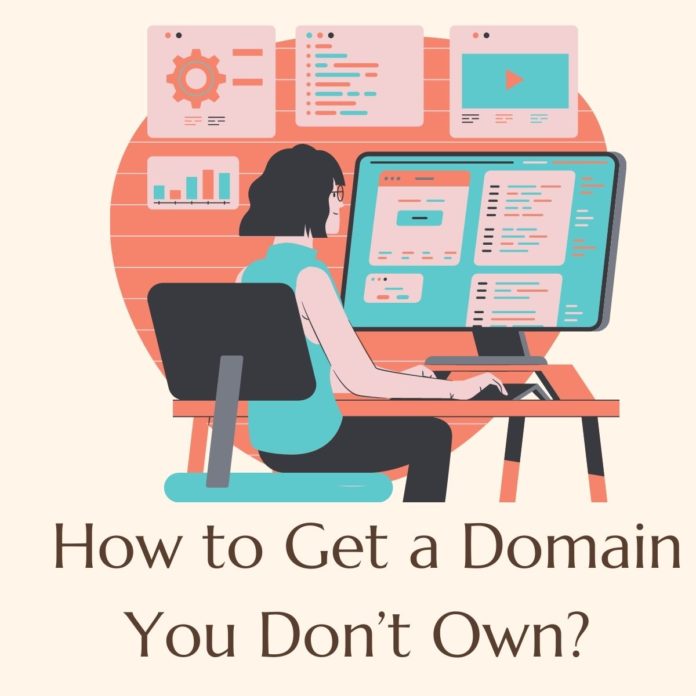Thriving in a digital business environment requires some strategies, one of which is having an ideal domain name for your website. A good domain name can help your website get more traffic and build your brand awareness.
When looking for a domain name, sometimes you will find that another party owns the domain. You might think that you should just give up on it and immediately look for other alternatives. However, there is still a way to get this domain name and use it for your website.
This article will tell you how you can buy domain names you don’t own. It’ll also include some tips and tricks to help you conduct your inquiry safely and efficiently.
1. Check What the Domain is Used For
The first step you should take is to visit the domain you want to buy. If you find that the domain is used for an active and functional website, the domain owner is less likely to sell it to you. However, if the domain only contains a placeholder, it is a sign that it may be for sale.
Also, try to find out if the domain name has been used for a website before. Use tools to check website history, such as Wayback Machine.
It’s possible that the domain you are looking to buy may have been used for malicious or illegal activities. Make sure to avoid this kind of domain since it can harm your brand name and hinder your website’s growth in the future.
2. Find the Domain Name Owner
Once you are sure that the domain name is available for sale and it isn’t associated with any illegal activities, it is time to contact the owner. If you are lucky, the placeholder website might already have the owner’s contact information on it, voiding the need for additional research.
But more often than not, you will have to find the contact information yourself. Besides telling you the website history, Wayback Machine also has a way to find the owner’s information. Another tool to help your research is the WHOIS service.
WHOIS lookup can give you information, including owner contact details, domain creation date, and domain expiration date.
If you can’t find the necessary information to contact the domain owner, you can search through various domain auction sites such as GoDaddy, Sedo, or Namecheap.
3. Check the Domain’s Worth
If you are new to buying domains, it can be quite tricky to determine domain pricing. One thing you need to know is that there is no strict rule when it comes to domain name value.
All of the prices are decided by individual owners, and it is possible to haggle during the transaction.
However, several factors could affect a domain’s price, including:
- Keywords. When a domain name contains a popular keyword, it will most likely cost more since it can improve your website’s SEO.
- Generic value. Generic value means that a domain name is vague enough to be used by almost any business.
- Brandability. Some domain names have a certain quality where they are highly iconic and easy to remember, which is helpful for brand building.
- Age. A lot of domains that have been activated for quite some time are considered to be more valuable.
- Shortness. Generally, the shorter the domain name, the pricier it is.
There are several ways to help you get the general idea of a domain’s worth.
Start by going through domain marketplaces to get the approximate price for a domain name. Tools like Estibot can also help you get a point of reference when estimating a domain’s worth.
4. Contact the Domain Owner
After you finished your research and got the needed information about the domain and its owner, you are now ready to contact them. There are several ways you can contact the domain owner, depending on how you get their contact information.
If you have the owner’s direct contact information, start by sending out an email that contains an introduction and an inquiry for the domain you want. Don’t forget to include your initial offer in the email based on your previous research.
It is also possible to contact the owner through domain buying services, like auction sites and marketplaces. Most of these services will help you with the negotiation process and make sure that you get the domain safely. However, you will need to pay some service fees.
5. Negotiate the Purchase
As mentioned before, the final price for your desired domain is only set after a negotiation process between you and the domain owner. Aside from the price, there are several other terms that you need to settle during the negotiation, including payment terms and domain transfer.
6. Buy the Domain from the Owner
Make sure that you use a safe platform to conduct financial transactions. Use services such as Escrow or ACE Money Transfer instead of eTransfer or wire transfer to avoid potential fraud attempts. These websites charge a small amount for each transaction, but the financial transaction will be safer for both parties.
Another way to transfer the funds safely is to use a domain marketplace service. These types of services will not only make sure that the transaction is safe, but they will also help you with the domain transfer process as they’re connected to domain registrars.
There is also a possibility that the domain name could have been stolen. To check, conduct a test using DNS Trails and see if there are any unusual changes to the DNS record.
It is also a good idea to get additional contact information such as phone numbers if possible.
7. Consider Backordering the Domain
Backordering includes waiting for domain name ownership to expire and ordering it as soon as it is available. This is a great method to consider if you can’t find the contact details of the current domain owner or if they don’t want to sell their domain until it expires.
To help you track the domain’s expiration date, you can use services from websites such as CatchTiger and DropCatch.
Keep in mind that there is no guarantee that you will get the desired domain even after using a back ordering service. To purchase a domain, the previous owner needs to let go of their domain ownership after it is expired.
8. Understand the Alternatives
After going through some steps mentioned above, there will always be a chance that you end up not getting the domain name you want. Sometimes the domain name owner is just not willing to sell the domain, or it may be impossible to find the owner in the first place.
That is why we recommend that you always have a plan B and prepare several alternatives if getting your wanted domain name is not possible. There are several tips to try when looking for other domain options:
- Add a short verb to the domain name. You can add “get” or “try” in front of the initial domain name.
- Extend your brand with an additional keyword. Just like how Tesla uses teslamotor.com instead of tesla.com, since it is already taken, try to include a related keyword to your URL.
- Add your country name to the URL. Some businesses, like Nissan, use nissanusa.com as their domain name since nissan.com is taken.
Using the domain name generators available online can also be a good tool to try.
Conclusion
If you have come up with a perfect domain name for your website and found out that it’s taken, don’t panic. Not all is lost yet as you can see if you can re-purchase it from the current owner.
Here’s how you can buy a domain name from another party:
- Check what the domain is used for
- Find the domain name owner
- Estimate the domain’s worth
- Negotiate the purchase
- Buy the domain from the owner
If you can’t find the domain owner or if they don’t want to sell, consider these options:
- Consider backorder
- Understand the alternatives
Remember that there is no guarantee that you will get the domain name you want since the process involves the domain owner too. However, this guide will surely help you conduct the required research and inquiry when looking to buy a domain name for your website.
















